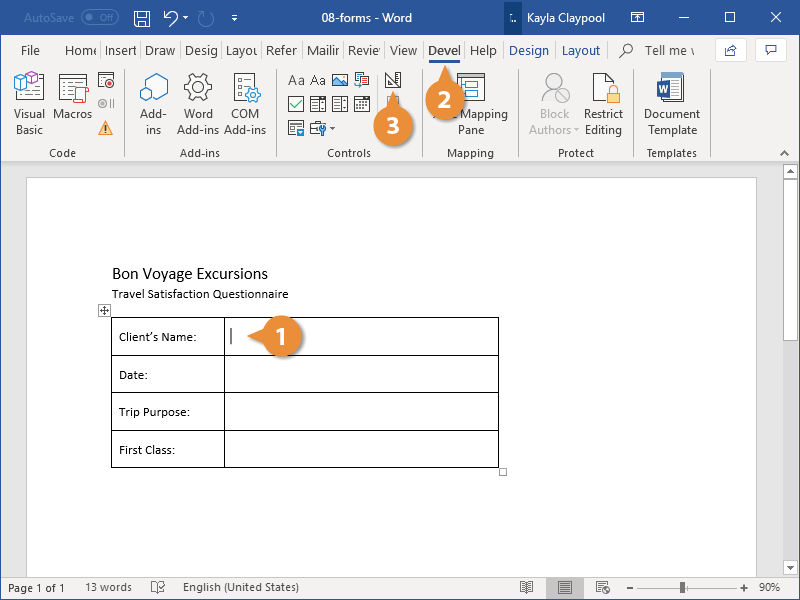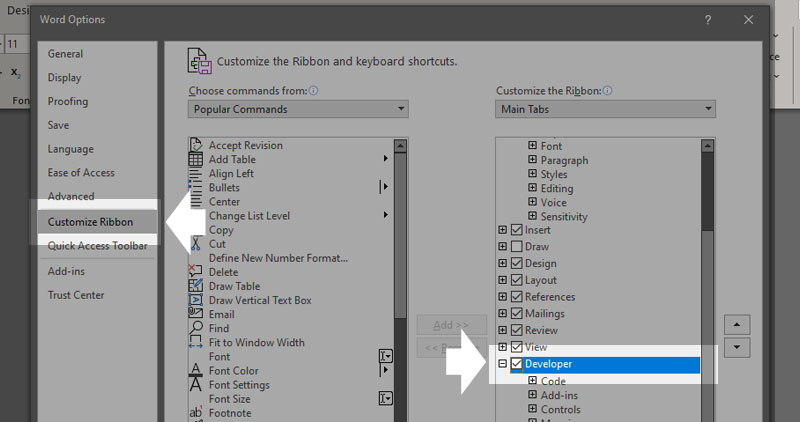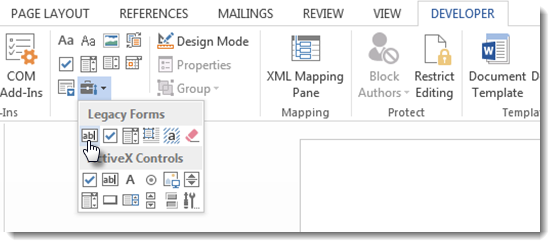
In the introduction to this section I stated that Word will fill in or populate "most" other designated "like" fields automatically. Word will populate the REF CustomerName fields with the name you entered in your form field.ġ. Type a name in the form field and press TAB.Click on Yes, Start Enforcing Protection.Editing Restrictions>Check Allow only this type of editing in the document.After you have entered one or more REF fields.Note the bookmark name (Text1) and check "Calculate on exit." Double click the text form field to display the options dialog.

Insert a text formfield using the forms toolbar.An example of an on-line form is provided in the following demonstration project.

The beauty of on-line forms is that you can fill in one field and Word will fill in or populate " most" other designated "like" fields automatically.On-line forms are Word documents that have "fill in the blanks." They are like a pre-printed form with "fields" on the screen instead of blank lines on paper.Users familiar with the Word 2007/2010/2013 interface will likely think of it as a "protected" form using "legacy" formfields. Note: Long time Word users and particularly Word 2003 users are likely to think of this as simply a "protected" form using formfields. If you find a Userform daunting, or if you want to avoid VBA and macros, then you might try a Word on-line (protected) form. For more in-depth examples see my Create and employ a Userform, Custom VBA\Userform Message Box and.A basic introduction and video example creating a userform is available here: Create Userform YouTube.User entered data is then populated in one or multiple locations in the document. UserformĪ Userform provides a graphical User Interface (UI) with a document template which you can use to prompt your document user to enter all pertinent data. See section 7, Content Controls, if you want to go directly to information about Content Controls introduced in Word 2007. Regardless, the methods are functionally the same. Some of the graphics and/or user interface controls I mention may be from Word 2003. Sections 1 through 6 address methods that can be used in all versions of Word (at least Word 2000 onwards). Note: A lot of this material was prepared and posted before the release of Word 2007 and the introduction of Content Controls.
#Insert text field in word document full
If you have other solutions or suggestions for inserting objects into protected Microsoft Word forms, please add them to the comments below.This Microsoft Word Tips & Microsoft Word Help page offers several solutions to the question, "How do I enter data in one place in a document and have it automatically repeated in other places?" My intention is not to reinvent the wheel, so after a brief discussion I may simply send you on to an existing tips page or other web articles containing full explanations of some of the more comprehensive methods. Untick the sections you want unprotected. Then click on ‘select sections…’ just below. When you protect the document go to Editing Restrictions, click on ‘allow only this type of editing in the document, select Filling in forms. The sections where others may change/add information are unprotected. The sections with fields and text that should not be changed are protected. We handle this by using multiple sections in our templates/documents.

Kudos go out out an anonymous visitor who submitted the following solution (thanks, whoever you are!):

from San Antonio, TXĪNSWER: I have to admit I was a bit stumped by this problem. I have tried to insert other legacy fields into the table cell where I want the end user to insert the object but none of them have worked.Īny suggestions will be greatly welcomed and thank you for your time!


 0 kommentar(er)
0 kommentar(er)
